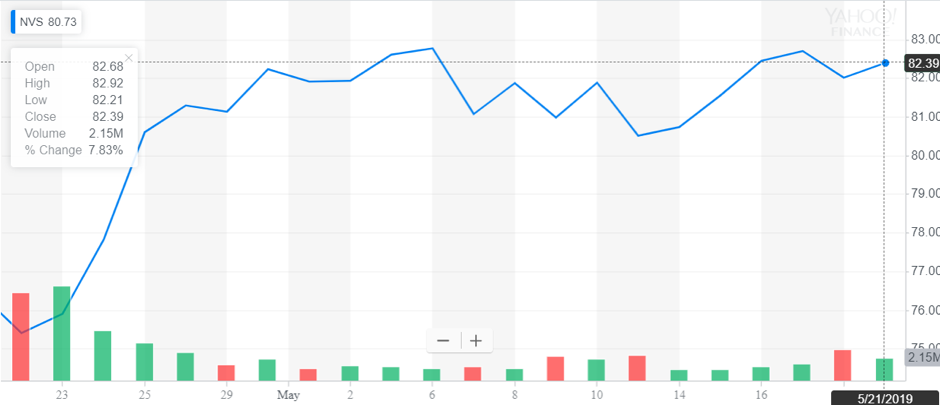Pharmaceutical giant Novartis is preparing to release a new drug therapy, Zolgensma, later this year. The therapy could be ground-breaking – a single-treatment therapy for spinal muscular atrophy, a rare inherited disorder and wasting disease that often leads to early death. Here’s the only problem: Novartis has suggested the price tag for Zolgensma could come in somewhere around $5 million. That has proved controversial. But the company’s CEO, Vas Narasimhan, says that healthcare systems for chronic diseases are priced on a “pay-as-you-go” model – for single treatment therapies, we need to think differently.
Novartis’ share price has appreciated by 8% over the year so far

Source: Yahoo Finance
In a commentary for CNBC, Narasimhan wrote that this “major breakthrough” would introduce “new upfront cost challenges to our already stretched healthcare system.” He urged policymakers and companies to collaborate on the creation of a new pricing system which would ensure similar breakthroughs made it to market. Describing the type of therapies that he had in mind, he wrote:
“By leveraging a patient’s own biology, cell and gene therapies are already reversing congenital blindness, curing aggressive forms of pediatric leukemia and may soon grant infants with neurological genetic conditions a second chance at life. Researchers are currently developing 300 of these therapies targeting more than 100 serious and often deadly diseases.”
Narasimhan’s point is simple: these therapies are being developed by private companies, and if you make them far less lucrative than pay-as-you-go therapies, you incentivise the people working on them to go back to pay-as-you-go as a model. That would be a shame, because the promise of miracle one-time-treatments is a compelling one.
He wrote: “Clearly, a cure is better for the child, their family, our health system and society, as reflected in a healthy, productive life and the avoided cost and grief of months or years of chronic care. But we need new economic models to determine exactly how much value that represents. I am encouraged that independent health assessment organizations and governments are working with patients, providers and pharmaceutical companies to come up with these new approaches.
If we can agree on the right framework for assessing value, companies can and should price potentially curative cell and gene therapies in a way that allows patients, health-care systems, companies, and broader society to benefit from the human and economic advantages of these innovative new treatments.”
Disclosure
Dominion holds Novartis in its Global Trends Managed Fund.
Author: Theo Leworthy
Disclaimer: The views expressed in this article are those of the author at the date of publication and not necessarily those of Dominion Capital Strategies Limited or its related companies. The content of this article is not intended as investment advice and will not be updated after publication. Images, video, quotations from literature and any such material which may be subject to copyright is reproduced in whole or in part in this article on the basis of Fair use as applied to news reporting and journalistic comment on events.


